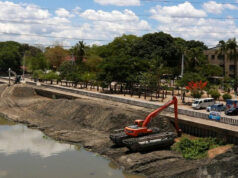
By Jochebed B. Gonzales, Senior Researcher
THE mining and quarrying industry was the most competitive in terms of the ratio of job applicants to available professional positions between Jan. 2015 and June 2016, the Philippine Statistics Authority (PSA) said.
The PSA, which released the findings of its LabStat report on occupational shortages and surpluses, said the sector had around 36 applicants per vacancy followed by professional, scientific and technical activities (12.4) and real estate activities (9.3).
The PSA considers a ratio of 10 to be the threshold for classifying an industry as having a surplus of applicants.
Meanwhile, the lowest ratio was posted by “other service activities” and human health and social work activities at 1.9, followed by water supply, sewerage, waste management and remediation activities (3.0), education (3.1), and agriculture (3.8).
Applicants for professional positions made up 15% of jobseekers while professional positions account for 13% of vacancies during the period. The study reported 698,683 job vacancies overall.
The top five occupations with the highest applicant-to-job ratio were mining engineers, metallurgists and related professionals (70.9), paramedical practitioners (28.5), policy administration professionals (23.2), financial and investment advisers (22.7), and financial analysts (22.6).
Specialist medical practitioners had the lowest applicant-to-job ratio at 1.2, followed by generalist medical practitioners (1.4), landscape architects (1.6), archivists and curators (1.7), and vocational educational teachers (1.7).
Sought for comment, Rizal Commercial Banking Corp. (RCBC) economist Michael L. Ricafort said, “Prior to the closures, there was a surge in investments. After that, there were no new ventures.”
Ruben Carlo O. Asuncion, chief economist at Union Bank of the Philippines (UnionBank) was of a similar opinion:”The country is so rich of important minerals and resources. I think this surplus was from the time before there was intense scrutiny from the current administration,” he said.
“The country was consecutively posting positive economic growth and there was momentum for a lot of the industries, and mining and quarrying is one of them.”
The economists were referring to the uncertainty on the mining sector’s prospects in the country after plans to close 23 of the country’s 41 mines and suspending operations in five other sites were announced by then Environment Secretary Regina Paz Lopez last year. She later said she wanted contracts for 75 projects in pre-operation stage also cancelled for being located in watersheds.
Commenting on agriculture’s low vacancy ratio, UnionBank’s Mr. Asuncion said that the sector “really needs strategic and effective focus.”
“We know that the agriculture sector has a small contribution to the whole picture of economic growth, and it is expected that a small number of vacancies and corresponding applicants will be in the said sector. This is also a huge challenge to expanding economic growth where much of poverty has been persistent.”
The same could also be said of the health and social sector, which Mr. Asuncion noted “has very meager opportunities” in the country.
“Wages are relatively low [in the sector] and the tendency is to look for health and social jobs abroad where one can be paid three or four times more,” he said.
For Mr. Asuncion, a “great potential” can be seen in the manufacturing sector amid the government’s push for increased spending on infrastructure development.
“The services sector, as well, is not far behind particularly on construction and real estate,” he said.
RCBC’s Mr. Ricafort concurred: “If you also look at manufacturing, it also picked up. The Philippines has become an attractive market and one of the fastest-growing [economies]…[and has] become compelling especially for global and multinational companies to set up shop here,” Mr. Ricafort said.



